Ornamental Metalwork
|
-
About this Collection
Hand-wrought metalwork has been a stunning addition to the design and decoration of buildings and gardens throughout history.
Wrought iron is easily worked yet very strong, and can be used for ornamentation as well as a structural element. The gates and railings of late 17th and early 18th century Great Britain are especially renowned for their graceful dignity, created by elegant scrollwork within a framework of panels.
Gold, silver, and brass can be highly polished and exquisitely worked to create beautiful and precious decorative objects.
Whether they are magnificent baroque gateways, gold and silver plate, or exquisite brass religious objects, metalwork can play an important role in completing the overall design of a building.
-
Pugin's drawings of tomb railings
A design for the railings that surround tombs, in Gothic Revival style, by A. W N. Pugin.
Drawing from the Steedman sketchbook entitled Designs for Iron & Brass work in the Style of the XV and XVI Centuries of 1836.
-
Early 16th century ironwork on a chapel in Ely Cathedral, Cambridgeshire, England
Architect Bailey Scott Murphy's folio volume English and Scottish Wrought Ironwork of 1904 sought to bring together photographs and drawings of the best examples of this art and present them in one uniform scale
Early 16th century ironwork on a chapel in Ely Cathedral. Bishop West, whose burial chapel this is, supervised its construction in the early 16th century. Details of the rich ornamentation are highlighted.
-
Intricately scrolled gate ironwork in the gardens of Trinity College at Oxford, early 18th century
Architect Bailey Scott Murphy's folio volume English and Scottish Wrought Ironwork of 1904 sought to bring together photographs and drawings of the best examples of this art and present them in one uniform scale. Among the featured examples are several colleges from Oxford and Cambridge, medieval churches, royal palaces, and country houses inspired by the designs of Sir Christopher Wren.
Intricately scrolled ironwork on the top of the gate in the gardens of Trinity College at Oxford, dating from the early 18th century.
-
Pugin's drawings of church coffers
Pugin's designs for two coffers and two keys, both in full Gothic Revival elaboration. In this case, the word 'coffer' is used for a chest to store valuables.
Drawing from the Steedman sketchbook entitled Designs for Iron & Brass work in the Style of the XV and XVI Centuries of 1836.
-
Pugin's hand-drawn title page to Designs for Iron and Brass Work drawing book
The title page of Pugin's sketchbook Designs for Iron & Brass work in the style of the xv and xvi centuries, hand drawn in black and red ink using Gothic Revival letter forms and decorative elements. The published version of this book appeared in 1836.
-
Sullivan's design for the bronze gates of the Wainwright Tomb
-
Wrought Iron gate at Drayton House in English Baroque Style
Architect Bailey Scott Murphy's folio volume English and Scottish Wrought Ironwork of 1904 sought to bring together photographs and drawings of the best examples of this art and present them in one uniform scale.
Wrought Iron gate at Drayton House in Northamptonshire, England. Much of the magnificent ironwork at this house was erected around 1700, using the English Baroque style made popular by Sir Christopher Wren.
-
Elevation of the bronze grills of Sullivan's Wainwright Tomb
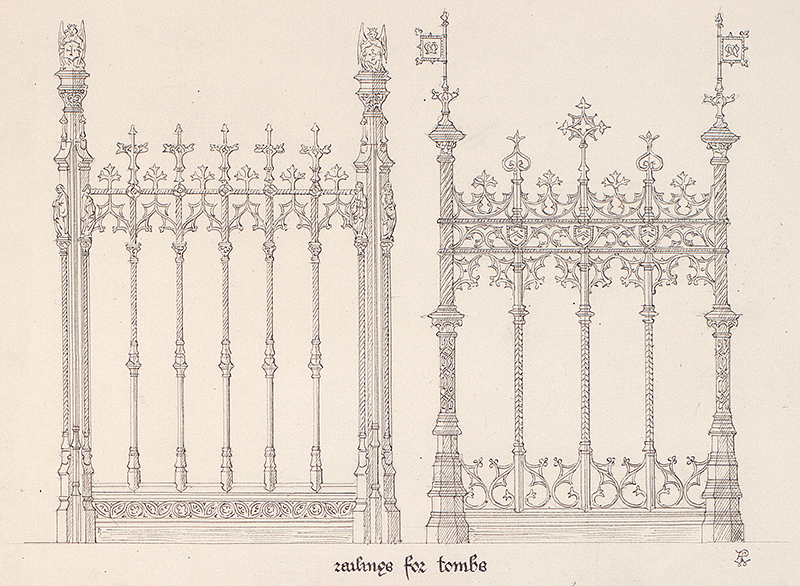 View Image
View Image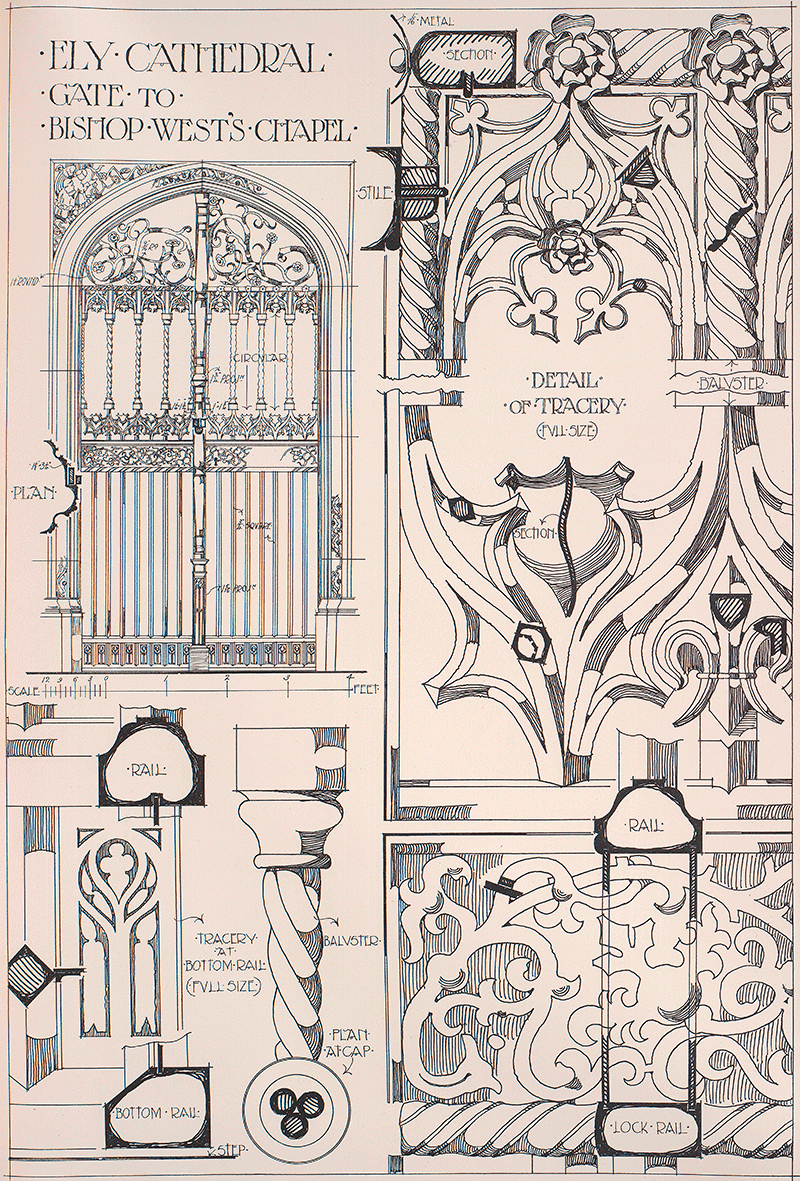 View Image
View Image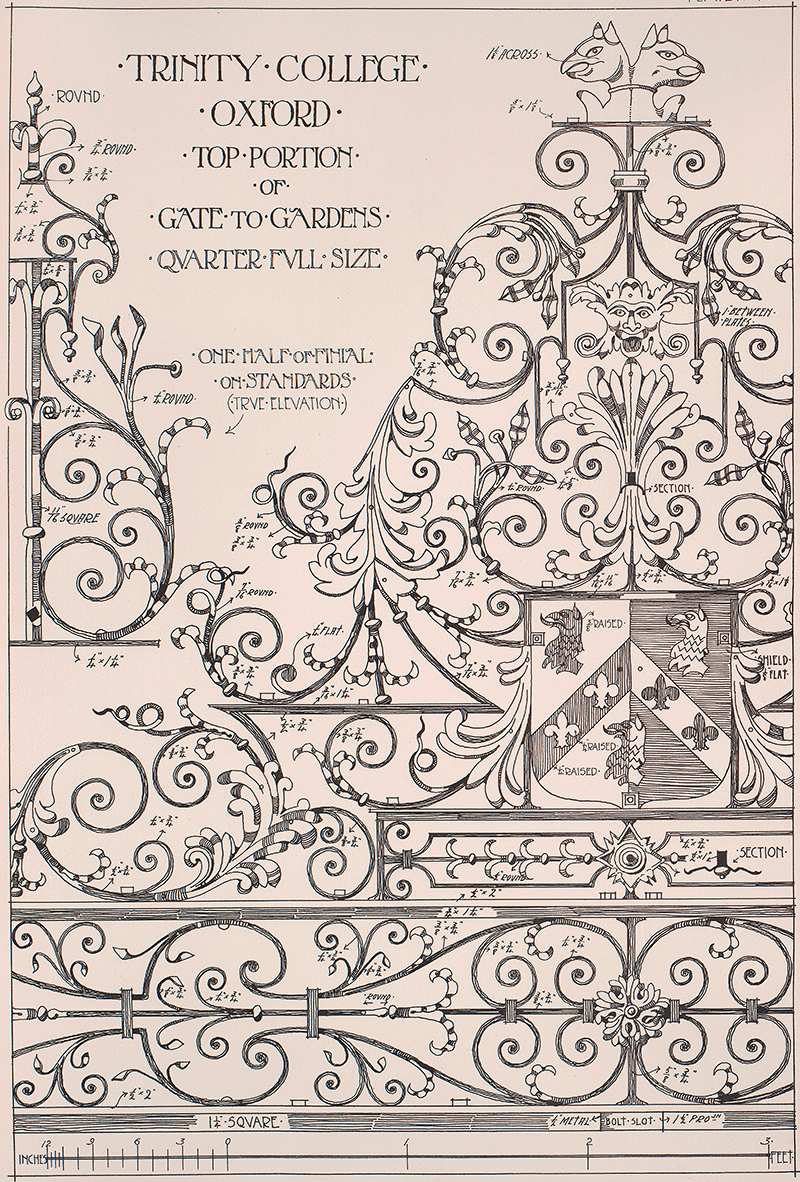 View Image
View Image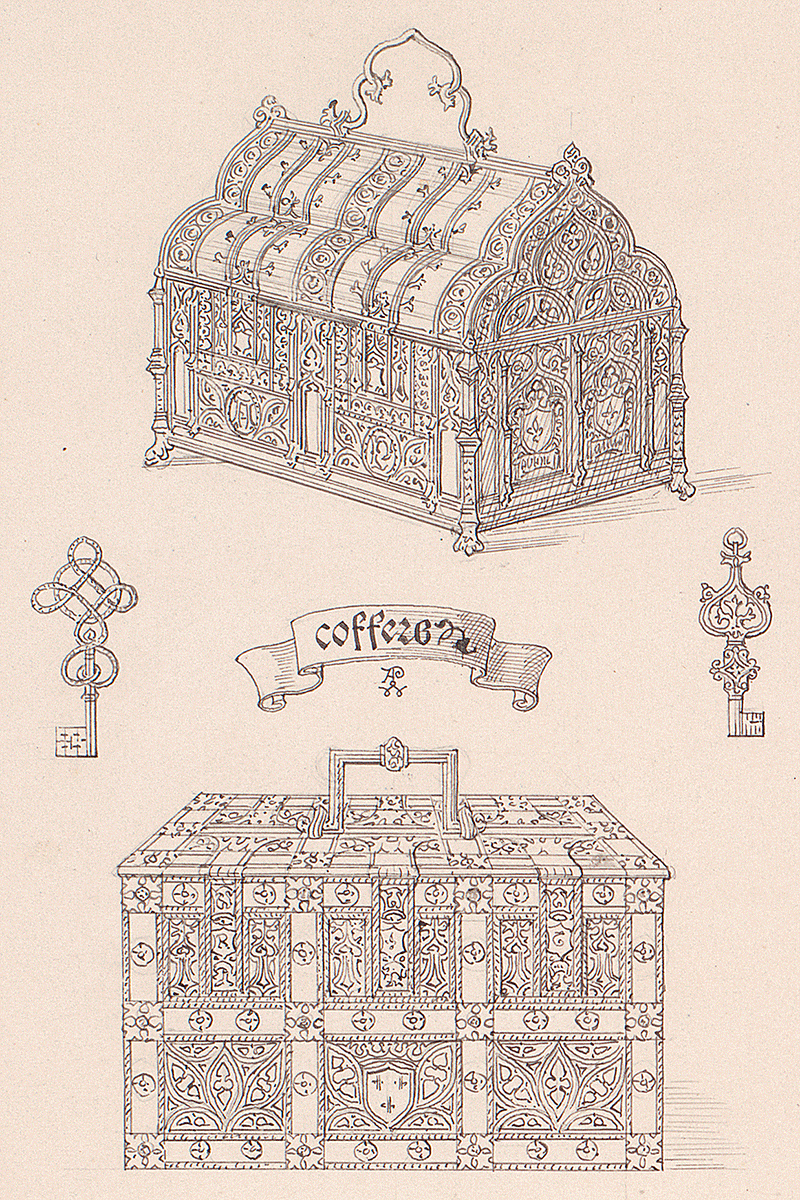 View Image
View Image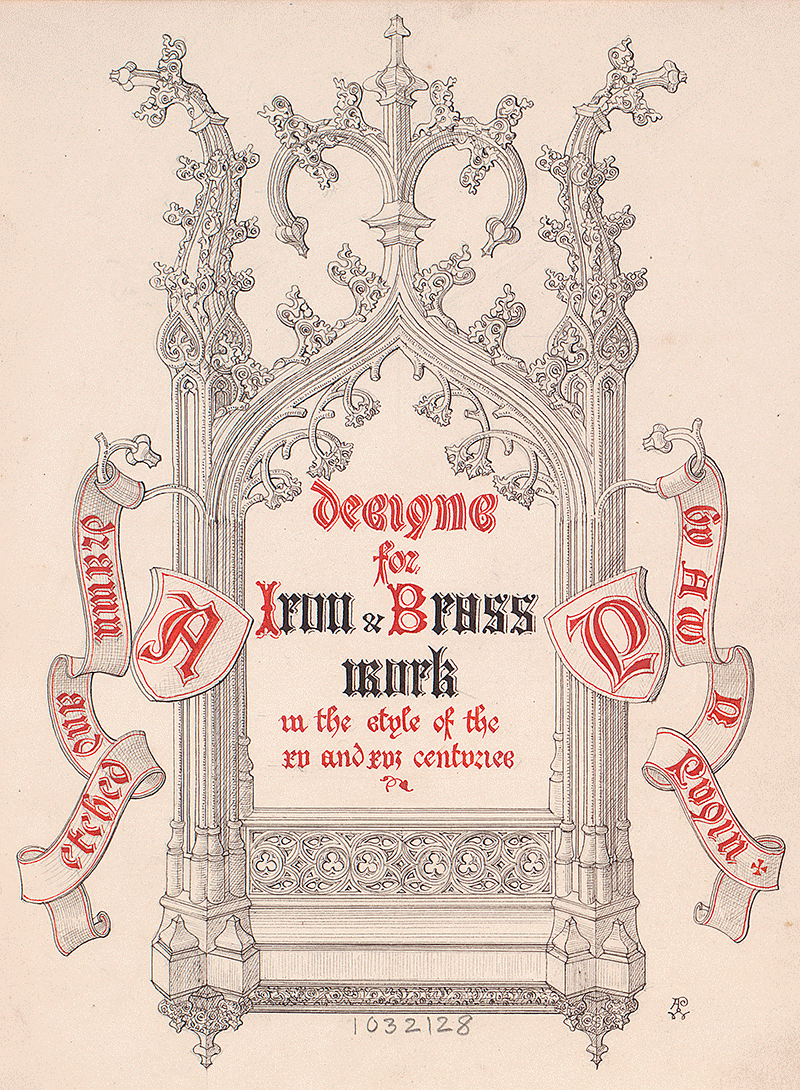 View Image
View Image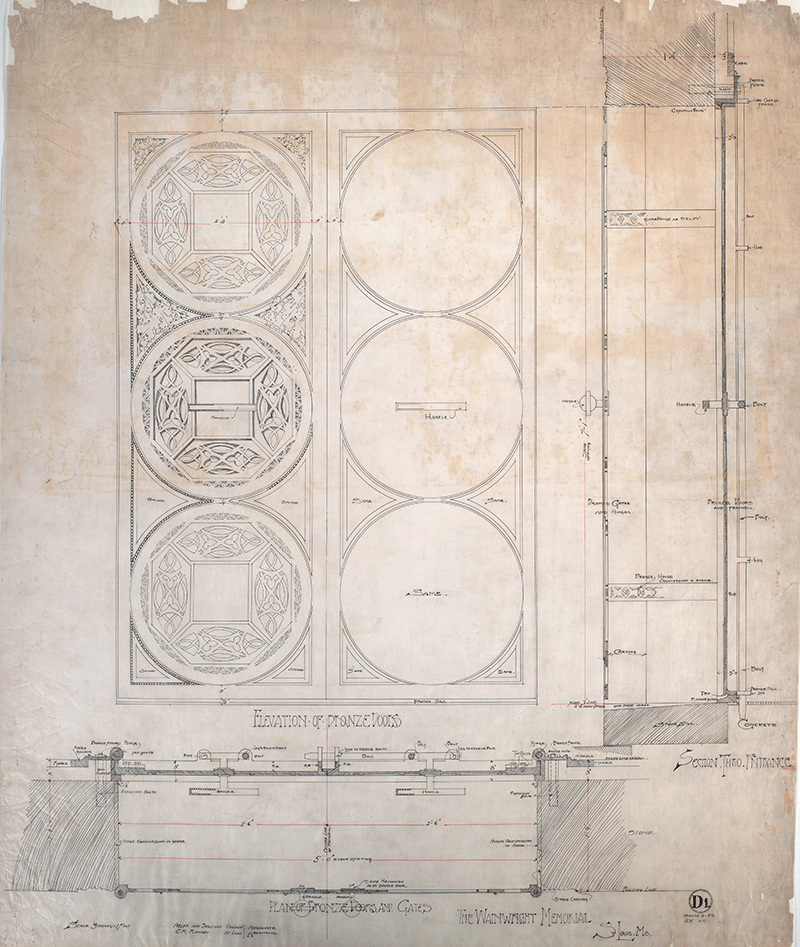 View Image
View Image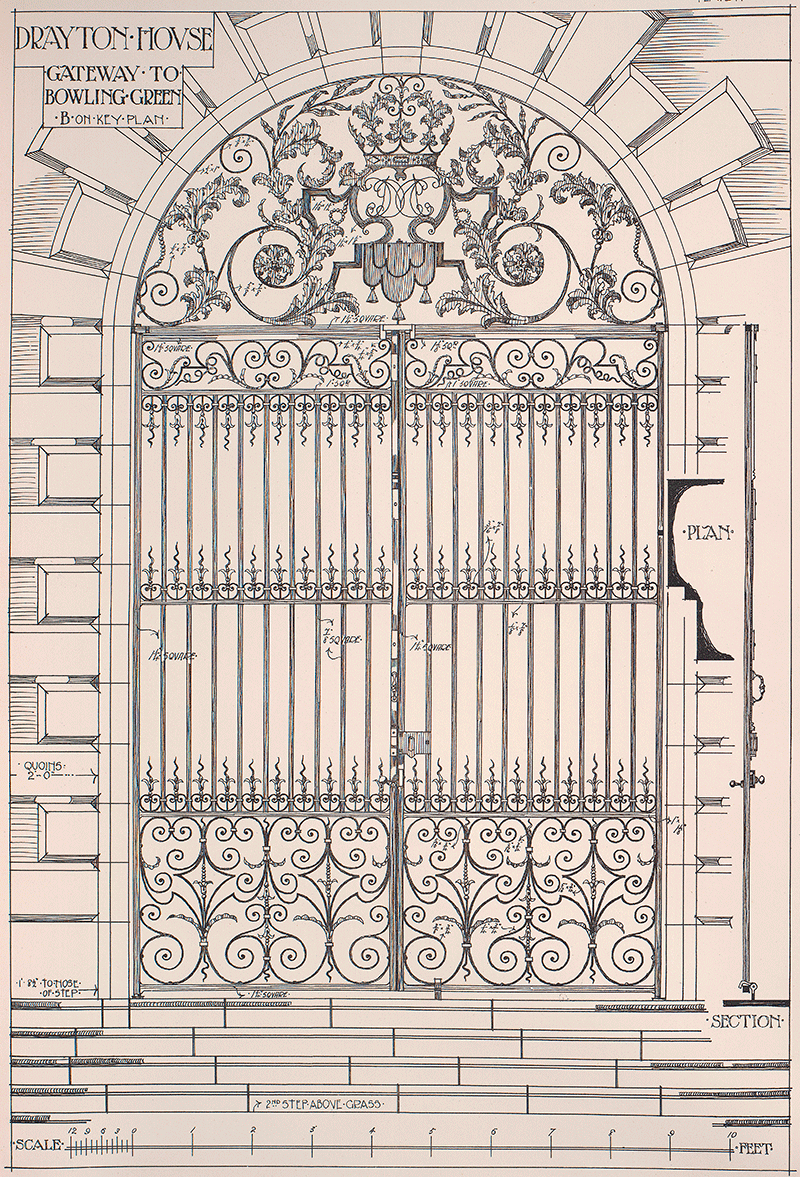 View Image
View Image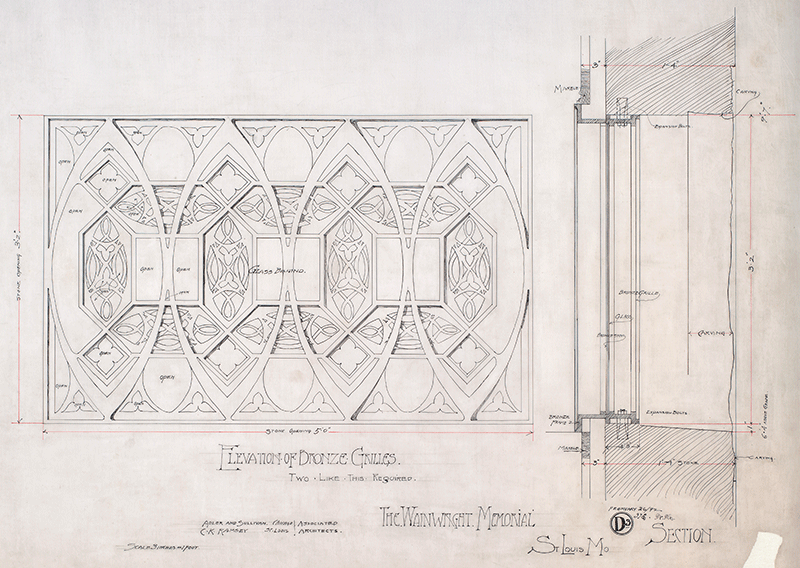 View Image
View Image